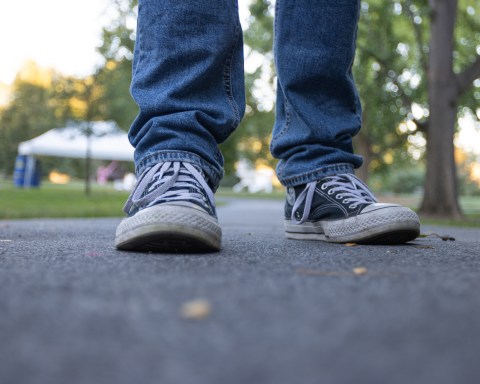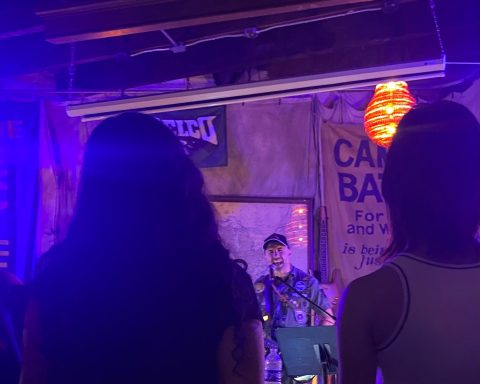Editor’s note: This article was initially published in The Daily Gazette, Swarthmore’s online, daily newspaper founded in Fall 1996. As of Fall 2018, the DG has merged with The Phoenix. See the about page to read more about the DG.
Last Friday evening, multiple cultural practices and forms of artistic expression were blended together in Skins & Songs & Steps, a collaboration between the groups Spoken Hand Percussion Orchestra and Voices, an a cappella ensemble. Both groups focus on blending different cultural traditions together to form a rich, intercontinental whole. Several varieties of dance incorporated into songs within the performance — including tap, hip hop, and South Indian Bharatanatyam.
Spoken Hand is a percussion ensemble that combines different forms of drumming to create one unique sound, with roots stemming from Afro Cuban, Afro Brazilian, North Indian, and West African musical tradition.
Daryl Burgee, the founder and artistic director of Spoken Hand wrote that “[the] program reach[ed] back into the deep roots of intertwined musical and spiritual traditions. The element of so many cultures and diversities blended together is really representative of what we have access to today”.
Voices has established itself as an ethnically diverse a capella group known for exploring a wide variety of vocal expression with performers each representing different nationalities and ethnic backgrounds. Within Skins & Songs & Steps, the group incorporated techniques as diverse as Tuvan throat singing, Balinese monkey chant, and beat boxing with several different vocal styles, even within the same song.
The performance began with complete and sustained darkness, followed by the sounds of multiple indistinct voices. First, only a single singer was lit onstage. As more and more musicians joined in, they were revealed to the audience by manipulating stage lighting — a tool used throughout the performance to draw attention to different musicians and artists at different times.
The performance managed to draw the audience into the spirit of song and dance as many members began dancing and clapping towards the end of the show. The finale, “Imani,” managed to capture the elements of voice, percussion, and the multiple varieties of dance in a cohesive and exhilarating way that summed up the energy and creativity of this eclectic performance.
This event was brought to campus as part of The Cooper Series by The Cooper Foundation, whose goal includes “bring[ing] guest speakers and performers in music, film, dance, and theatre who show promise of distinguished achievement.”
Image Courtesy of Bote Fote Drumworks
















